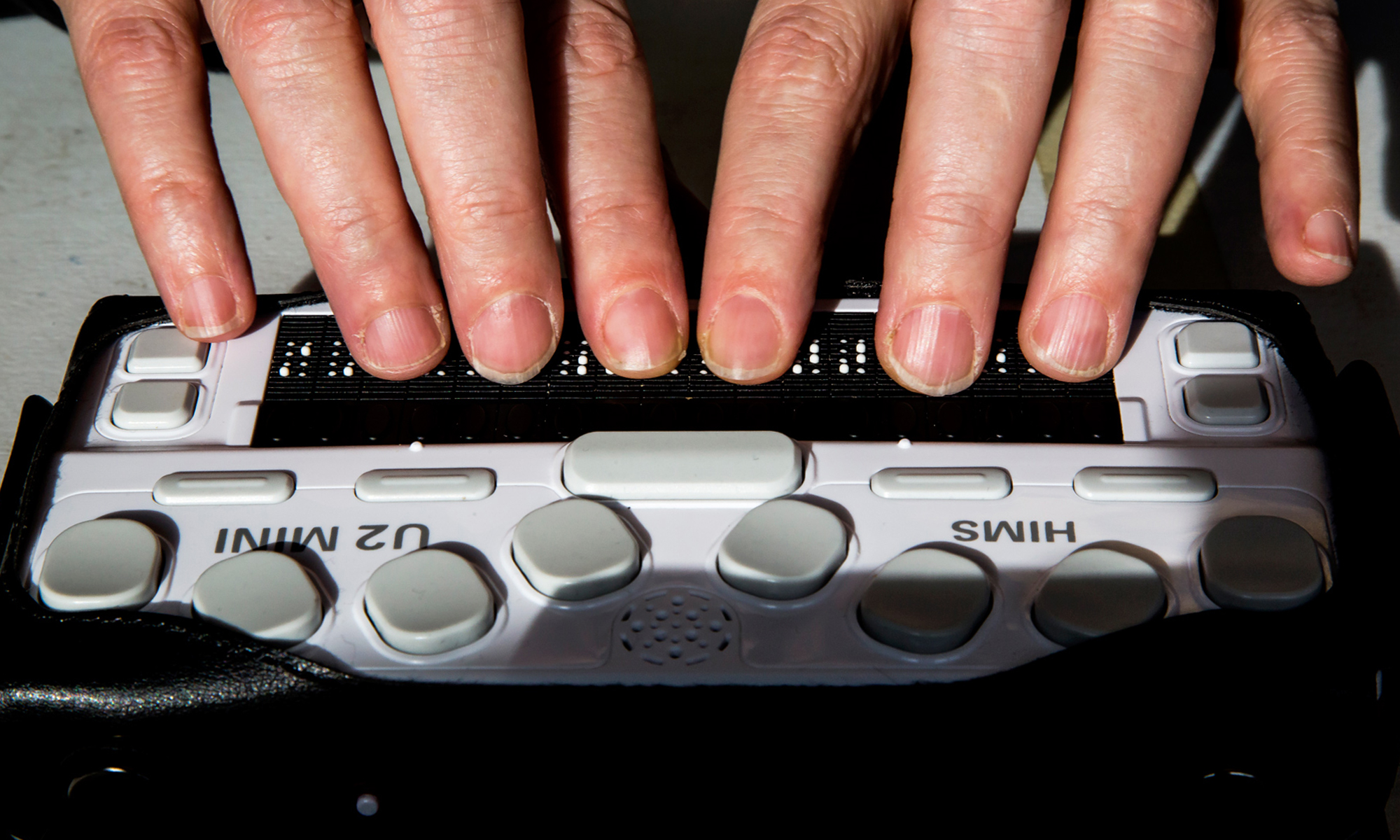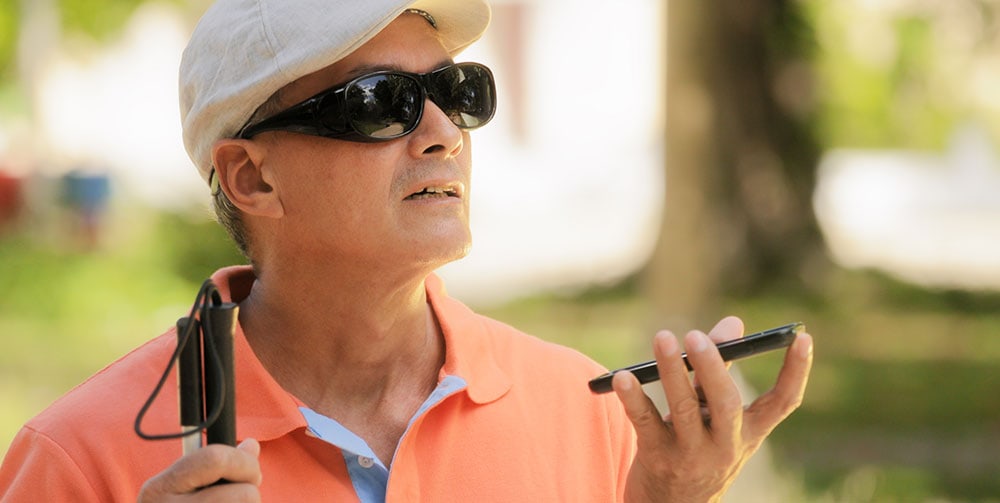Empowering Self-reliance With Assistive Modern Technology for the Blind
The combination of assistive modern technology into the lives of people with aesthetic impairments represents a significant advancement in promoting freedom and self-sufficiency. From ingenious screen viewers to advanced smart walking sticks, these devices not just boost daily navigating and communication yet additionally equip customers to engage meaningfully in numerous facets of life. As we explore the myriad benefits and real-world applications of these modern technologies, it comes to be essential to check out the underlying factors that contribute to their effectiveness and the capacity for future developments in this vital field.
Introduction of Assistive Modern Technology

The development of assistive modern technology is grounded in principles of inclusivity and empowerment. Developments in software application, hardware, and sensory enhancements provide individuals with options customized to their specific requirements. From screen readers that convert text to speech, to responsive tools that convey information via touch, these devices transform the way people involve with their surroundings.
Along with useful applications, assistive innovation promotes greater social incorporation and involvement in numerous sectors, including education and learning and work (AI-powered visual aids). As r & d remain to evolve, the possibility for assistive innovation to further enhance the lives of aesthetically impaired people stays encouraging, paving the way for a more equitable society where every person can prosper
Kinds of Assistive Devices
A range of assistive tools have actually arised to sustain individuals with aesthetic impairments, each created to meet certain needs and enhance day-to-day functioning. These gadgets vary from low-tech services to state-of-the-art technologies, providing diverse options for customers.
Low-tech gadgets include magnifiers and large-print products that aid in reading and writing. Braille devices, such as Braille slates and styluses, enable tactile reading and interaction. Alignment and wheelchair aids, like white canes, help users browse their atmosphere safely.
On the greater end of the range, digital magnification systems and display visitors supply substantial assistance. Electronic magnifiers enable customers to increase the size of text and pictures on displays, while display visitors transform electronic web content into manufactured speech, facilitating accessibility to information on computers and mobile phones.
Mobile phone applications likewise play a vital function, supplying functions like text acknowledgment and navigating assistance. Wearable modern technology, such as smart glasses equipped with augmented fact, is arising as an encouraging device to improve situational recognition.
Benefits of Assistive Innovation
The integration of assistive modern technology dramatically improves the high quality of life for people with aesthetic impairments. These innovations empower individuals by promoting freedom, allowing them to navigate their environments better and carry out day-to-day jobs with higher simplicity. Screen viewers and magnifying software program permit people to accessibility digital details, clear aviator glasses fostering expert and academic chances that might have formerly been out of reach.
Moreover, assistive gadgets such as clever walking sticks and general practitioners applications provide real-time navigating support, enhancing movement and safety and security. This increased autonomy not only boosts self-esteem however likewise urges social engagement, permitting customers to take part more completely in their communities.
Assistive modern technology likewise helps with communication, assisting users link with others you can try these out through voice acknowledgment and text-to-speech applications. This capacity is important for maintaining partnerships and accessing essential info.
Additionally, the modification choices offered with many assistive innovations ensure that customers can tailor devices to their particular needs, additionally enhancing functionality and effectiveness. On the whole, the benefits of assistive technology for individuals with visual disabilities are profound, promoting an extra inclusive society where everybody can pursue their desires and goals.
Instance Researches and Success Stories
Highlighting the transformative influence of assistive modern technology, countless study illustrate how people with aesthetic impairments have actually successfully incorporated these devices right into their every day lives. One compelling instance includes an university student that used screen analysis software application to browse online resources and academic products efficiently. This innovation not only promoted her education and learning however also boosted her confidence in joining discussions and team jobs.
Another situation study features an expert who employs a smart device application designed for navigation and things recognition. By utilizing this app, he has regained freedom in both his individual and job settings, allowing him to commute separately and engage with colleagues a lot more properly.
Additionally, a retiree shared her experience with braille e-readers, which enabled her to access a substantial range of literature and stay gotten in touch with her area through book clubs.
These success tales underscore the important duty of assistive modern technology in promoting self-reliance, improving lifestyle, and promoting social integration for people with aesthetic impairments (Voice-activated assistive devices). By accepting these cutting-edge devices, users can get over obstacles and take opportunities that contribute to their individual and expert fulfillment

Future Fads in Assistive Technology
Technology in assistive modern technology is positioned to redefine the landscape of assistance for individuals with visual problems. Arising trends highlight the assimilation of expert system (AI) and maker learning, which improve the capability of gadgets that assist with navigating and info access. For pop over to this site instance, AI-driven applications are currently with the ability of interpreting visual data in real-time, enabling users to engage with their atmosphere much more independently.
Additionally, the development of wearable innovation is progressing swiftly. Smart glasses outfitted with augmented truth (AR) can give audio descriptions of surroundings, changing how users connect with public rooms. These gadgets not just advertise freedom however likewise foster social addition.
Furthermore, the Internet of Points (IoT) is making homes smarter, enabling seamless connection between assistive tools and day-to-day appliances. This connectivity equips customers by enabling automatic actions and voice-activated controls tailored to private demands.
Verdict
To conclude, assistive technology plays a crucial role in equipping people with visual problems by enhancing their self-reliance and interaction with their surroundings. The diverse series of applications and gadgets available not just facilitates navigating and interaction however additionally promotes social combination and chances for individual and professional growth. As developments continue in this area, the potential for enhancing the lifestyle for those with visual disabilities will certainly increase, promoting greater autonomy and empowerment.
